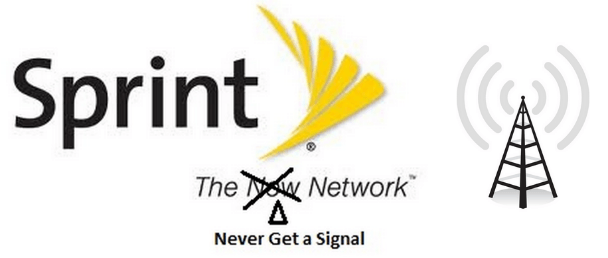 Sprint customers will once again have to endure service interruptions and disruptions and the possibility of degraded service after the cellular company quietly announced it was terminating leases with Crown Castle and American Tower — two of the largest owners of shared communications towers in the country, and relocating Sprint cell sites to government-owned property.
Sprint customers will once again have to endure service interruptions and disruptions and the possibility of degraded service after the cellular company quietly announced it was terminating leases with Crown Castle and American Tower — two of the largest owners of shared communications towers in the country, and relocating Sprint cell sites to government-owned property.
Sprint is aggressively pursuing a $2 billion cost-cutting program to stay competitive with T-Mobile, AT&T, and Verizon Wireless. Re/code reports much of this savings will come from rushing cellular antennas off shared-use cell towers and erecting antennas on public land instead, expected to cost much less. The move is “raising eyebrows” on Wall Street, as analysts grow concerned about Sprint’s exposure to early termination fees from the early end of multi-year contracts with at least two tower owners. Many are also concerned Sprint will end up placing towers in less than ideal areas, opening up coverage gaps and unanticipated negative coverage changes for customers.
Jennifer Fritzsche, senior analyst for Wells Fargo, predicts the move could “be a major step backwards on the recent progress [Sprint] has made” on its ‘brand repair’ efforts.
Sprint has been criticized for seemingly never-ending “network improvements” that have promised subscribers dramatically better service. Instead, many customers have defected to competitors like T-Mobile after their patience came to an end waiting for upgrades that never arrived. Sprint’s latest effort to save money could cost Sprint even more in additional customer defections if service deteriorates.
“Penny wise, pound foolish,” is the conclusion of wireless expert Roger Entner, an analyst for Recon Analytics. “Customers don’t like surprises.”
Customers in the eastern United States and in large cities are likely to be at risk for signal degradation, if only because the government owns much less land in these areas available for Sprint’s use.
Sprint also intends to abandon much of its fiber backhaul network, now owned primarily by AT&T and Verizon. Instead, Sprint will transition to microwave backhaul service between cell towers and its network connection points, for a potential savings of $1 billion annually. The microwave approach was last taken by Clearwire, which Sprint acquired in 2012. Few, if any carriers, are expected to follow Sprint’s footsteps.
One person familiar with the initiative, dubbed the Next Generation Network, predicted another wave of network hiccups, Re/code reported. The plan is likely to result in reduced coverage in rural areas and a lot of problems for current customers as Sprint embarks on its massive tower relocation project.
“Getting there is going to be a nightmare,” said the source, who requested anonymity because he is not authorized to speak about the matter. “It’s going to be very, very disruptive.”


 Subscribe
Subscribe